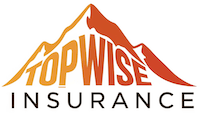Compare Car Insurance: A Step‑by‑Step Guide to Finding the Right Policy (Expert 2025 Update)
Published on July 29, 2025

Michael Reyes
Auto Insurance Specialist
Michael Reyes is an auto insurance specialist with 8+ years in claims and agent roles; expert in premiums, telematics, and young-driver discounts.
Compare Car Insurance: A Step‑by‑Step Guide to Finding the Right Policy (Expert 2025 Update)
Shopping for car insurance can feel like navigating a maze. With countless providers, coverage options, and varying premiums, how do you know which policy truly fits your needs? In this guide, we’ll walk you through how to compare car insurance effectively. From understanding what coverage you need to evaluating quotes and discounts, we’ll help you make the most informed, cost-effective decision.
Why Comparing Car Insurance Matters
Price vs Coverage
Not all policies are created equal. One provider might offer lower premiums but lack key protections, while another includes extras that make a higher premium worthwhile. The goal isn’t just to find the cheapest rate—it’s to find the best value.
Financial Protection
Your car insurance is more than just a monthly bill—it’s a financial safety net. Comparing policies ensures you’re covered adequately in the event of an accident, theft, or liability claim.
Tailoring to Your Life Situation
Your driving habits, vehicle type, and life changes (like marriage or a new job) affect what coverage suits you best. Comparing policies ensures you’re not overpaying for unnecessary features—or underinsured when it counts.
Step 1 – Know What Coverage You Need
Minimum Legal Requirements
Each state sets a minimum for liability insurance. For example, California requires 15/30/5 (meaning $15,000 per person in bodily injury, $30,000 per accident, and $5,000 for property damage).
Liability vs Full Coverage
- Liability covers injuries and damage you cause to others.
- Full coverage includes liability, plus collision (your vehicle in an accident) and comprehensive (non-collision issues like theft or hail).
Consideration for Loaned or Leased Cars
If you finance or lease your vehicle, the lender often requires full coverage including comprehensive and collision.
Step 2 – Gather Personal and Vehicle Information
Driver Details (Age, License, History)
Insurers look at your:
- Age and gender
- Driving record
- License status
- Marital status
Vehicle VIN and Safety Features
Your Vehicle Identification Number (VIN) provides make, model, year, and factory-installed features that may qualify for discounts.
Usage Patterns (Commute, Business, Leisure)
The number of miles you drive, and your primary usage, impact risk levels and premiums.
Step 3 – Understand the Types of Car Insurance
Liability Insurance
Covers damage to others. Required in most states.
Collision and Comprehensive
- Collision: Covers repairs after a crash (even if it’s your fault).
- Comprehensive: Covers theft, weather damage, vandalism.
Medical Payments and PIP
- Medical Payments (MedPay): Helps cover your medical bills.
- Personal Injury Protection (PIP): Covers you and your passengers, sometimes including lost wages.
Uninsured/Underinsured Motorist
Protects you if you’re hit by someone without adequate insurance.
Step 4 – Research Car Insurance Companies
Local vs National Providers
- National brands like GEICO or Progressive offer wide networks and tech tools.
- Local providers may offer more personalized service and regional discounts.
Financial Strength Ratings
Check AM Best, Moody’s, or S&P for stability. You want a company that can pay claims reliably.
Customer Satisfaction & Claims Service
Read reviews on J.D. Power, BBB, and Trustpilot. A company’s reputation in handling claims is just as important as its price.
Step 5 – Use Comparison Tools and Aggregator Sites
Best Comparison Websites for 2025
- The Zebra
- Gabi
- Compare.com
- Policygenius
These platforms let you input your info once and receive quotes from multiple insurers.
Tips for Getting Accurate Quotes
- Be honest about your driving record.
- Include all drivers in the household.
- Double-check vehicle info.
Common Pitfalls to Avoid
- Comparing only by price
- Forgetting to match coverage levels
- Ignoring deductibles and add-ons
Step 6 – Compare Car Insurance Quotes Side-by-Side
Premiums and Deductibles
The premium is what you pay monthly. The deductible is what you pay out-of-pocket per claim. Balance these for optimal savings and security.
Coverage Limits and Exclusions
Review the fine print. Does the policy cover rental cars? Are there mileage limits? What incidents are excluded?
Add-ons and Optional Coverage
Consider extras like:
- Roadside assistance
- Rental reimbursement
- Gap coverage (for financed cars)
Step 7 – Look for Discounts and Savings
Driver and Vehicle-Based Discounts
- Good driver
- Student
- Anti-theft devices
- Electric/hybrid vehicles
Multi-Policy and Loyalty Discounts
Bundle auto with home, renters, or life insurance to save 10–25%.
Telematics and Safe Driving Incentives
Enroll in programs like Snapshot (Progressive) or Drivewise (Allstate) to save based on actual driving behavior.
Step 8 – Evaluate the Fine Print
Policy Terms and Renewal Conditions
Know how your premium might change at renewal. Are rates locked in for a period?
Cancellation Policies
Some insurers charge cancellation fees or require written notice—don’t get caught off guard.
Dispute Resolution and Claims Handling
Check how disputes are handled and whether customer support is easy to access.
Step 9 – Talk to an Agent (Optional but Valuable)
Independent vs Captive Agents
- Independent agents can compare multiple insurers.
- Captive agents work for one company only (e.g., State Farm).
Questions to Ask Your Agent
- What discounts do I qualify for?
- How do you handle claims?
- Are there any hidden fees or surcharges?
When to Buy Directly
If you’re confident in your needs, buying online can save time and avoid commission fees.
Step 10 – Choose and Purchase Your Policy
Final Checklist Before You Commit
- Did you compare identical coverage levels?
- Have all drivers and vehicles been included?
- Are you aware of the total annual cost?
Payment Plans and Billing
Some insurers charge installment fees. Ask about annual or semi-annual payments for savings.
Setting Up Automatic Payments
You may qualify for small discounts with auto-pay and avoid late fees.
After the Purchase – Review and Monitor Your Policy
Annual Policy Reviews
Your life changes—your insurance should too. Reassess every 12 months or after major events.
Reporting Life Changes
Moved? Got married? New job? Update your insurer to ensure accurate rates and eligibility for new discounts.
Filing a Claim or Making Adjustments
Know your app, your contact number, and how to track claims. Most major insurers now offer mobile tracking.
Mistakes to Avoid When Comparing Car Insurance
Choosing Based on Price Alone
Cheaper doesn’t always mean better. Ensure the coverage matches your risk level.
Not Matching Coverage Limits
If one policy offers $25,000 in medical coverage and another offers $100,000, price differences make sense.
Ignoring Insurer Reputation
Good customer service and fast claims matter just as much as cost.
Frequently Asked Questions
How often should I compare my car insurance?
At least once a year or after major life events. Rates and eligibility can change frequently.
Can I switch providers mid-policy?
Yes, most insurers allow mid-term cancellation. Just make sure your new policy begins before canceling the old one.
Is online comparison safe and accurate?
Yes, when done on reputable platforms. Just ensure you’re on a secure, trusted site and providing accurate information.
What documents do I need to get quotes?
Typically:
- Driver’s license
- Vehicle VIN
- Current policy declarations page (if switching)
Will comparing quotes affect my credit score?
No. Most insurers use a soft credit check that doesn’t impact your score.
How soon can I start a new policy?
Usually within 24 hours—or even immediately if you purchase online.
Conclusion: Choose Wisely, Drive Confidently
Finding the right car insurance isn’t just about saving money—it’s about protecting what matters. By following this step-by-step guide to compare car insurance, you’ll ensure you’re getting the coverage you need at a price that fits your budget. Stay informed, shop smart, and drive with peace of mind.
You Might Also Like
Full Coverage Car Insurance: Is It Worth the Extra Cost? (2025 Breakdown)
Jul 29, 2025Top 10 Best Car Insurance Companies Reviewed (2025 Edition) – Expert Rankings & Comparisons
Jul 29, 2025Maximize Your Savings: 17 Car Insurance Discounts and How to Qualify in 2025
Jul 28, 20252025 How to Find the Best Car Insurance Near You
Jul 28, 20252025 Car Insurance Guide for Young Drivers: Actionable Tips to Lower Your Rates
Jul 28, 2025
